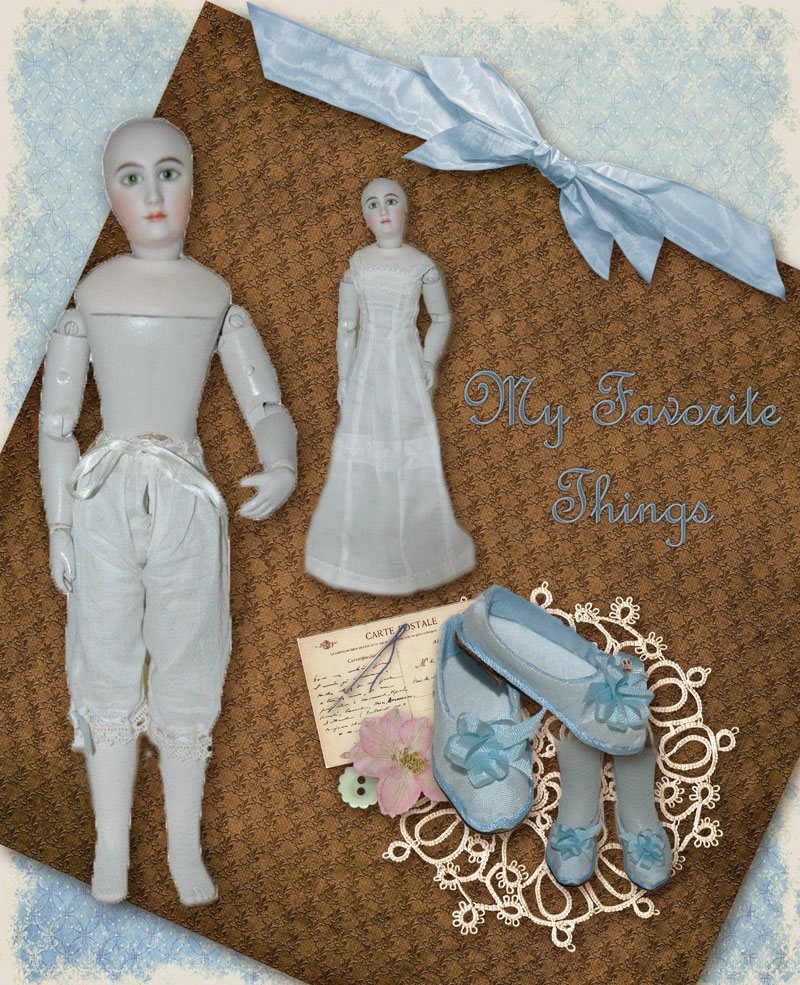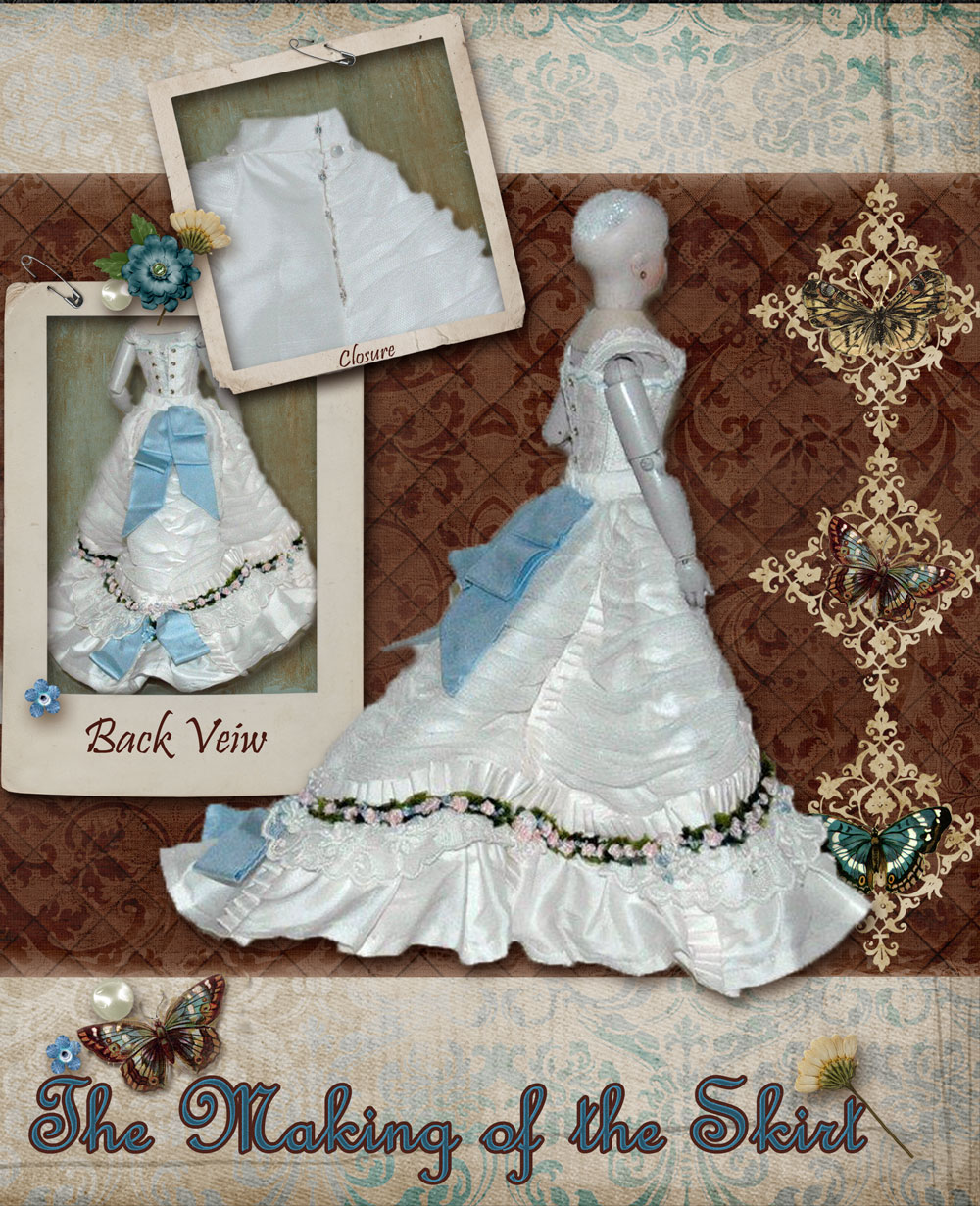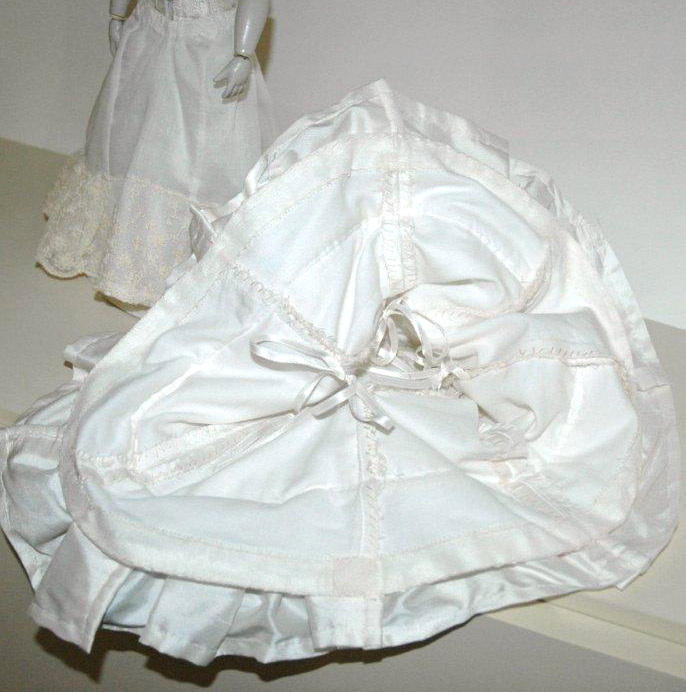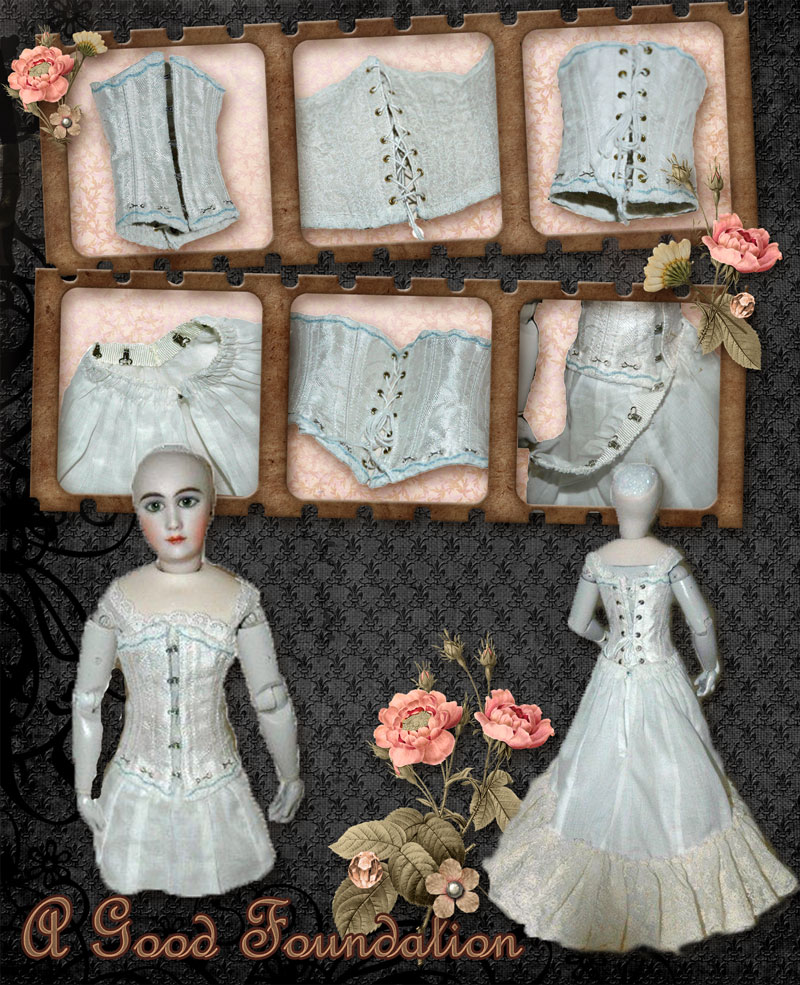I made a dress to take to the UFDC convention this past summer for My Favorite Things. This took 2 ½ months to make. I selected a fashion plate from a period I wanted to try, 1877 and researched to make things as authentically as I possibly could. As we go through these garments, please understand that “authentic” to me is, as a woman of the day would have worn her clothes. I try to sew as authentically to the period as I can. When sewing for antique dolls, “authentic” is a technical term for sewing of the period. I try to do both, but sometimes I miss.
The doll model is my Ultimate Fashion Doll by Alice Leverett Henderson, www.justalice.com. She is a Portrait Jumeau reproduction with green eyes. (Not authentic, but I wanted it that way.)
As I went through my processes I decided remake every pattern as I dressed the figure. What a lot of work. The split drawers trimmed with French beaded edging at the knees and the waist. Using a multipurpose trim aided the gathering of the edges to fit much easier.
The stockings are silk knit cut into a stocking shape and sewn with very close stitches along the back of the leg. The garters for this doll are simply tied ribbons.
I selected an antique shoe design, which consisted of ribbon stripes across the toe. As I sewed the stripes of 2mm silk ribbon, I realized I was not going to make those shoes a success. The scale was just off. I then tried to locate a small blue striped fabric, to no avail. Plan two, (or three or four), make the shoes of the same silk as the dress, and add a piping and bow. How boring. They are pretty, however!
The final addition is the chemise. I should have written down the book I researched that showed a full-length chemise. Generally, we see them hemmed at the knee. The chemise looks a tiny bit long, but when the corset goes on the chemise raises from the floor.
Stay tuned for the corset and formal slip. You just cannot beat a good foundation!
Kathi








